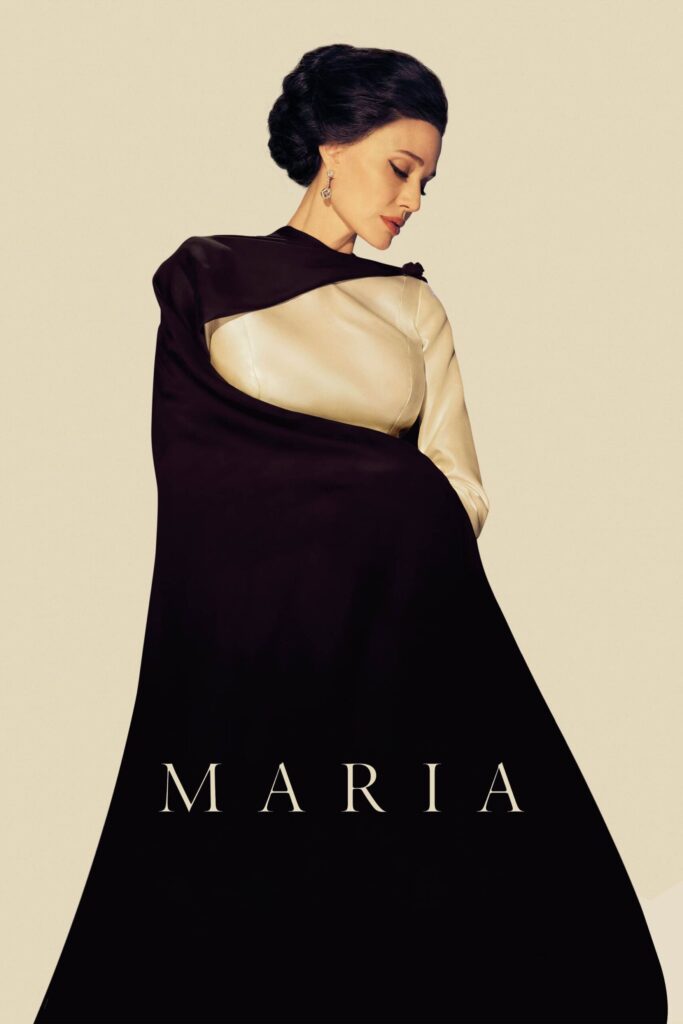Maria (2024), directed by Pablo Larraín, is a biographical drama that delves into the final week of the legendary opera singer Maria Callas’s life in 1977 Paris. Angelina Jolie portrays Callas, capturing the complexities of a diva grappling with fading fame, health issues, and haunting memories.
The narrative unfolds within the confines of Callas’s opulent Parisian apartment, where she lives in seclusion, attended only by her loyal butler, Ferruccio (Pierfrancesco Favino), and housemaid, Bruna (Alba Rohrwacher). As she attempts a comeback after a prolonged hiatus, Callas struggles with her deteriorating health and reliance on the sedative Mandrax. Her interactions with an imagined young filmmaker, Mandrax (Kodi Smit-McPhee), serve as a conduit for introspection, leading her to reflect on her illustrious career, tumultuous love affair with Aristotle Onassis (Haluk Bilginer), and strained familial ties.
Larraín’s direction offers a non-linear storytelling approach, blending black-and-white flashbacks with present-day sequences to juxtapose Callas’s vibrant past against her melancholic present. The film’s visual aesthetic, enhanced by Edward Lachman’s cinematography, captures the grandeur of 1970s Paris and the isolation of Callas’s existence.
Jolie’s portrayal has garnered critical acclaim for its depth and authenticity. Despite not physically resembling Callas, Jolie embodies the diva’s fragility and intensity, delivering a performance that resonates with both power and vulnerability. Her meticulous preparation, including months of opera training, adds a layer of credibility to the role, even though the film predominantly utilizes Callas’s original recordings, with Jolie lip-syncing to these pieces.
However, the film has faced criticism for its stylistic choices. Some reviewers argue that the emphasis on grandiosity and artistic flair overshadows the emotional core of the story, making it challenging for audiences to fully engage with Callas’s personal struggles. The use of imagined characters and hallucinations, while intended to provide insight into Callas’s psyche, has been perceived as a distraction from the narrative’s depth.
Maria aligns with Larraín’s previous works, “Jackie” and “Spencer,” focusing on iconic women facing personal turmoil amidst public scrutiny. The film invites viewers to explore the dichotomy between Callas’s public persona and private despair, offering a poignant reflection on the isolating nature of fame and the relentless passage of time.
Maria presents a visually stunning and emotionally complex portrayal of Maria Callas’s final days. While the film’s stylistic elements may not resonate with all audiences, Angelina Jolie’s compelling performance provides a profound insight into the life of a woman who, despite her legendary status, grappled with the universal challenges of aging, loss, and the search for meaning.

